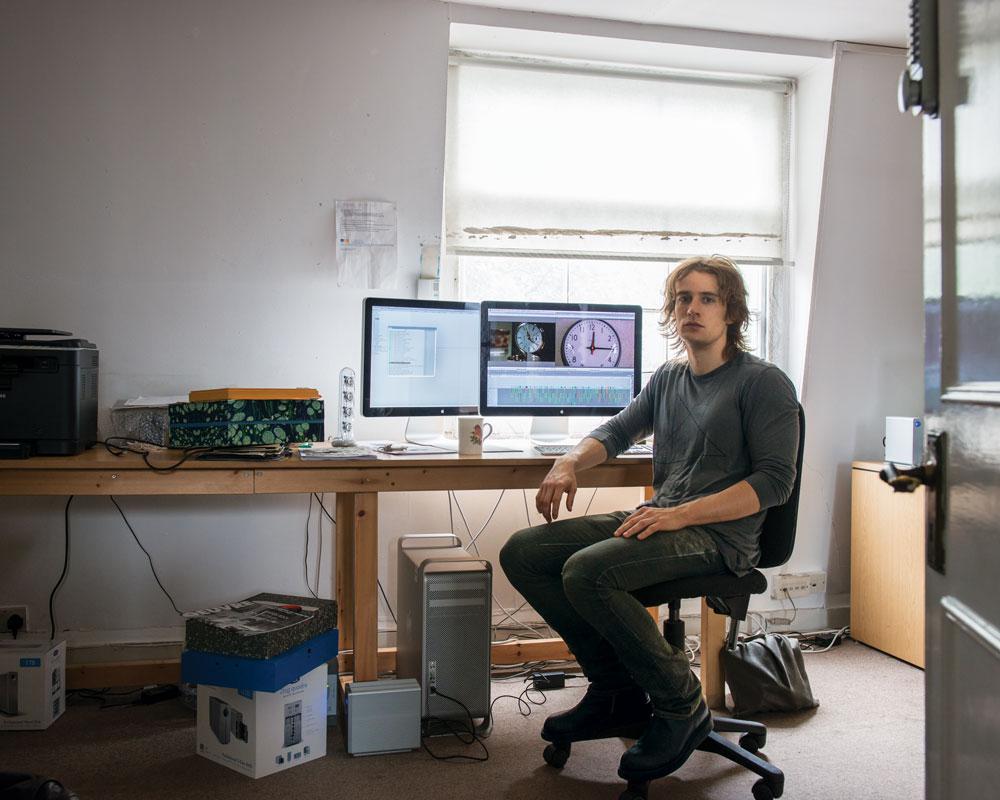Christian Marclay had an idea: to create a 24-hour video collage using film clips that signal the time of day. He had backers: the high-end London gallery White Cube and Paula Cooper Gallery in New York. Now he needed some help. The artist posted a notice at Today is Boring, a Shoreditch video store run by the musician and actress Tree Carr. A few days later, he assembled a small army of research assistants at White Cube. Paul Anton Smith, a 23-year-old Canadian who had immigrated to England three months earlier, was among them.
Marclay instructed Smith and the others to pore over movies for allusions to time. Later, he would weave these clips into a chronological composite. “It seemed very ambitious, certainly,” recalls Smith with a smile, “but I didn’t think it was crazy.” The Scarborough, Ontario–born film enthusiast, who had left behind a tedious job editing ads in Toronto (“I hate television commercials,” he says, twice), threw himself into the project. He shuttled through a few thousand movies, watching closely for visual or dialogic indications of the hour: the flash of a watch face, a shot of Big Ben, the panicked realization that “It’s 12:15!”
As the clips began to accumulate, Marclay asked Smith to assist him in sorting through the source material. Smith collected and categorized the researchers’ finds (thousands of excerpts in all) and began feeding them to Marclay, who did the editing. After three long years—during which Marclay fashioned smooth transitions, filled gaps in the chronology, and collaborated with a Brooklyn sound designer on a soundtrack—a finished product emerged: The Clock (2010).
The work is a symphonic mashup in which familiar faces appear and reappear, and little narratives materialize: children race home from school around three p.m.; families sit down to dinner at seven. Since premiering at White Cube, the video has been riveting audiences in cities including New York, Moscow and Jerusalem. “The reaction that it’s gotten out of people emotionally is not anything I could have predicted,” Smith says. “Watching The Clock, a lot of people are watching a reflection of their day-to-day existences.”
While museums compete for copies, Marclay and Smith have continued to develop new works: this spring, Smith helped Marclay create a collage of onomatopoeic comic-book words for the reopening of the Palais de Tokyo in Paris, and this fall they will present a video-clip and live-music performance at the Ruhrtriennale festival in Germany.
Smith has his own “creative ambitions,” but is content to contribute to Marclay’s projects for now. “Things have worked out for me in London so far,” he says with characteristic Canadian modesty. His work on The Clock has altered his relationship with film, however: “I think about all the movies I’ve seen since we finished The Clock that would have fit so well. When I saw the poster for Martin Scorsese’s Hugo, I thought, ‘Shit. Maybe for The Clock II, or something.’”

 Paul Anton Smith in Christian Marclay’s studio in London, UK, July 2012 / photo James Merrell
Paul Anton Smith in Christian Marclay’s studio in London, UK, July 2012 / photo James Merrell







